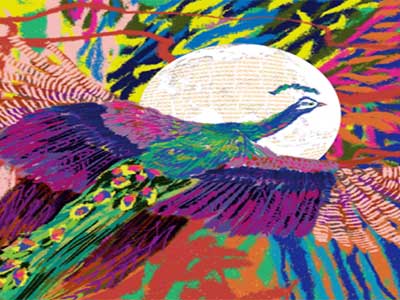Agra: The fight against leprosy has marked a significant success in India's health sector, yet this achievement often remains overshadowed.
Notably, the vital contributions of JALMA, located near Agra's iconic Taj Mahal, have not received the recognition they deserve over the past fifty years.
Read in Hindi: कुष्ठ निवारण प्रयासों में जालमा की रही है अग्रणी भूमिका
Through a multi-faceted approach and a dedicated healthcare initiative, JALMA has effectively reduced the prevalence rate of leprosy from 0.69 per 10,000 population in 2014-15 to 0.45 in 2021-22. Furthermore, the annual new case detection rate per 100,000 population has significantly declined from 9.73 in 2014-15 to 5.52 in 2021-22.
India's efforts have seen the number of newly detected leprosy cases plummet from 125,785 in 2014-15 to 75,394 in 2021-22, resulting in an annual case detection rate of 4.56 per 10,000 population. This remarkable progress positions India as home to one of the world's largest leprosy eradication initiatives, the National Leprosy Eradication Program.
The commitment of the Government of India to tackle this age-old disease, combined with JALMA’s influential work, illustrates a poignant story of progress and resilience in the realm of public health.
Some health experts have recently noted an increase in leprosy cases in certain parts of the country. This has prompted the health ministry to initiate remedial measures. A related problem that persists is the social stigmatization of lepers, resulting in social exclusion and discrimination, further exacerbating their plight. The story of Mahatma Gandhi treating a renowned leper highlights a long-standing commitment to compassion, yet this legacy remains unfulfilled for many who suffer in silence today.
It is worth mentioning that Agra’s JALMA Leprosy Centre, run by the ICMR, has played a pioneering role in controlling leprosy. Not far from the Taj Mahal, the Jalma Centre is a testimony to the friendship and love between two Asian countries, India and Japan.
The National JALMA Institute for Leprosy, a symbol of Indo-Japanese friendship, has served humanity by treating ostracized patients and lepers. The Japanese-founded JALMA Centre has made significant contributions to the cure and prevention of the dreadful leprosy disease.
The first Prime Minister Jawahar Lal Nehru laid the foundation stone of JALMA in December 1963. It was inaugurated by then Vice President Dr Zakir Hussain in 1967, with the first Japanese Directors Dr Matsuki Miyazaki and Dr Mitsugu Nishiura helping in the formative years. Nehru donated the land of 40 acres with infrastructure over a 10-year period that ended on March 31, 1976. It was taken over by the Ministry of Health and Family Welfare and then handed over to the ICMR as the Central JALMA Institute of Leprosy. It was funded through Japanese donations, the WHO, and the Government of India.
Today, it is one of the most modern, hi-tech research centres focusing on leprosy and other mycobacterial diseases. It has successfully developed new-generation immunological, epidemiological, and molecular diagnostic tools and methods and evolved the mapping of TB through DNA printing, which can deliver a test report in just one day compared to up to two weeks earlier. Through research and investigations in several critical areas like drug metabolism, drug resistance, and leprosy, the NJIL has built a formidable reputation.


















Related Items
Mobile clinics boost health outcomes, cut costs in developing countries
Private sector has become the beating engine of India’s economy
People eat less meat to benefit their own health, not for environment